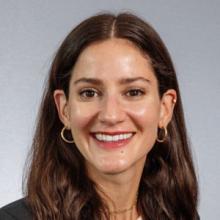Oregon passed momentous legislation 2021 requiring Oregon’s largest electricity providers to shift to 80 percent clean electricity by 2030 and 100 percent clean electricity by 2040. Oregon’s transition to a 100% clean grid offers incredible opportunities for our state. If done right, this transition will serve as the clean energy backbone to power our buildings, transportation, and industries. It will revitalize local economies and create family-wage jobs in the clean energy sector. Moreover, it will improve health and affordability for environmental justice communities across the state by reducing harmful climate and air pollution and providing cost savings for Oregon families. However, we must tackle transmission system challenges head-on to realize these benefits.
In 2021, Oregon’s two largest utilities, Portland General Electric and Pacific Power, delivered more than half of their electricity to customers from fossil fuels. Three years later, those utilities still have a long way to go.
At the same time, the demand for electricity in Oregon is spiking. Some of that is due to an accelerating shift toward electrification of our homes, businesses, and vehicles. However, the vast majority of new demand has been driven by industrial expansion in general and data centers in particular. The emergence of artificial intelligence (AI) is having the most significant impact. It takes around 10 times the amount of electricity to run AI-driven internet searches as conventional searches.
These two paradigm shifts, the transition to clean electricity and the surge in demand for electricity, require that electric utilities build more renewable energy projects and expand the transmission grid to deliver that new electricity to customers. Unfortunately, permitting and building a new transmission line in Oregon can take over two decades. So, while Oregon utilities work to expand the renewable generation and transmission systems, they need to find other tools to accelerate the transition.
That is where Grid Enhancing Technologies (GETs) come into play. GETs are a group of hardware and software solutions that increase transmission systems' efficiency, capacity, and reliability. Advanced conductors, one GETs technology, can increase by 40% the amount of electricity transmitted on existing lines with an investment payback in as little as two years! Conductors are equipment on transmission lines that help govern the flow of electricity. Advanced conductors take advantage of modern material science to enable increased power flows. Another example of GETs software technology is Topology Optimization. It acts as a smart navigation tool - Waze or Google Maps for the transmission grid - and automatically reconfigures electricity flows to avoid congested or overloaded transmission segments.
While GETs are relatively new, the federal government and leading states have already committed to accelerating the use of these technologies. In 2024, the Biden administration and the US DOE developed a plan to use GETs to upgrade 100,000 miles of transmission lines over the next five years to expand portions of the electricity grid. Colorado passed a bill in 2023 that requires its utilities to study the potential of GETs before breaking ground on a new transmission line. California, Maryland, Massachusetts, and Minnesota have introduced bills in the past year requiring their utilities to study GETs technologies and integrate them into their planning processes.
Given the pressing need for more transmission capacity in Oregon and the promise of GETs technologies, the Oregon Legislature must direct our Public Utility Commission and utilities to integrate GETs technologies into their planning processes. The 2025 legislature can act on legislation, HB 3336, to expand transmission capacity by requiring utilities to deploy cost-effective technologies to existing infrastructure. By developing and modernizing Oregon’s transmission capacity, this and other policies in the 2025 transmission package will help meet growing energy demands, increase resilience to severe weather events, and deliver the benefits of new renewable generation sources to ratepayers.





